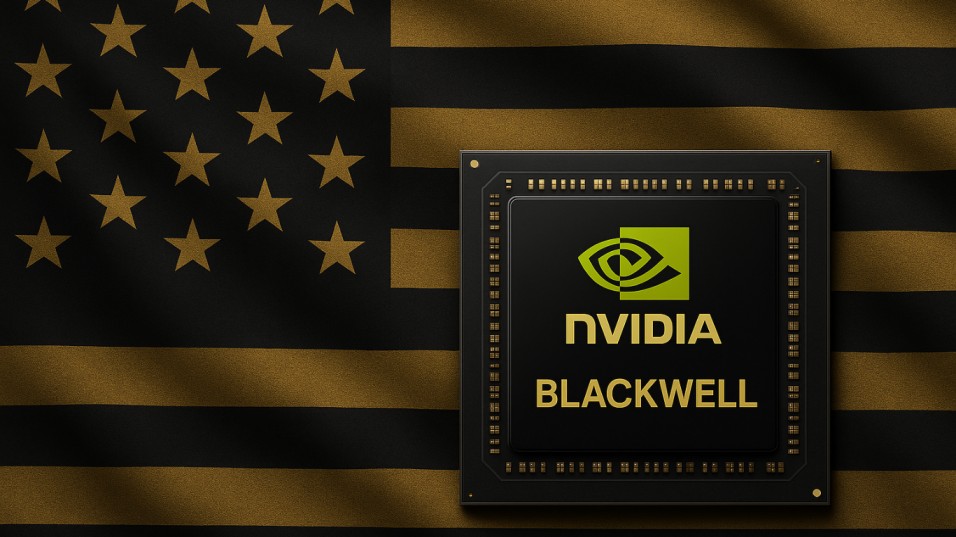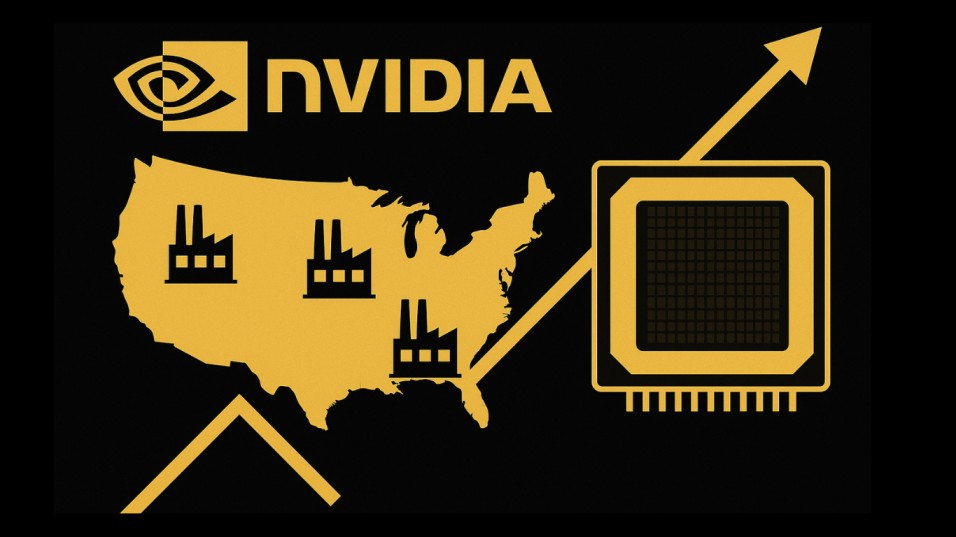The race to dominate artificial intelligence (AI) isn’t just about algorithms or data—it’s about who controls the physical backbone of the technology. Nvidia, a titan in the AI hardware space, is making a bold move to redefine this landscape by bringing its AI supercomputer and chip manufacturing home. With its next-generation Blackwell chips now produced in the U.S., a $500 billion investment in domestic AI infrastructure, and sprawling new facilities in Texas, the company isn’t just chasing innovation—it’s rewriting the rules of supply chain resilience.
At the core of this strategy is a critical question: How does Nvidia’s US manufacturing boost AI supply chain resilience? The answer lies in reducing dependence on overseas suppliers, accelerating innovation cycles, and creating a self-reinforcing ecosystem that supports everything from job growth to national security. As global tensions and logistical bottlenecks continue to threaten tech industries, Nvidia’s pivot to American soil could become a blueprint for the future of AI—and the U.S. economy.
Nvidia Blackwell Chips Made in the USA: A New Era of Technological Independence

For decades, the semiconductor industry has relied heavily on manufacturing hubs in Asia, particularly Taiwan and South Korea. But geopolitical tensions, pandemic-induced shortages, and soaring shipping costs have exposed the fragility of this model. Nvidia’s decision to produce its Blackwell chips—a powerhouse for AI training and inference—on U.S. soil marks a seismic shift.
The Blackwell architecture, designed to handle trillion-parameter AI models, requires precision engineering and rapid iteration. By localizing production, Nvidia cuts the time from design to deployment by up to 40%. Engineers in California can now collaborate with factory teams in real time, troubleshooting issues that previously took weeks to resolve across time zones. This agility is critical as industries like healthcare and autonomous vehicles demand faster, more reliable hardware upgrades.
Why This Matters:
- Quality Control: U.S. facilities adhere to stricter regulatory and quality standards, reducing defects.
- Security: Onshoring minimizes risks of intellectual property theft, a growing concern in AI development.
- Speed to Market: Domestic production slashes lead times, giving U.S. tech firms a competitive edge.
Nvidia AI Supercomputers Manufacturing in Texas: Building the Brain of Tomorrow
Texas is rapidly becoming the epicenter of America’s AI ambitions, and Nvidia’s $200 million facility in Austin is a testament to that. The state’s business-friendly policies, affordable energy, and growing tech talent pool make it an ideal hub for advanced manufacturing. But this facility isn’t just about assembling hardware—it’s a fusion of R&D, production, and workforce development.
The Texas plant will produce Nvidia’s DGX Super PODs, AI supercomputers that train models like ChatGPT and Midjourney. By co-locating R&D labs with factories, engineers can test new designs on-site, accelerating innovation. For example, a recent breakthrough in liquid cooling systems for data centers was prototyped and scaled within weeks, a process that previously took months overseas.
The Texas Advantage:
- Energy Resilience: The state’s independent power grid and renewable energy investments ensure stable operations.
- Talent Pipeline: Partnerships with UT Austin and Texas A&M create a steady stream of skilled engineers.
- Geographic Diversity: Reducing reliance on Asian manufacturing hedges against regional disruptions.
Impact of Nvidia’s US-Made AI Supercomputers on Job Creation
Nvidia’s investments are igniting a jobs revolution that extends far beyond Silicon Valley. In Texas alone, the company estimates its facility will create 2,000 high-paying manufacturing roles by 2025. But the ripple effect is even broader:
- Direct Jobs: Electrical engineers, robotics technicians, and supply chain managers.
- Indirect Jobs: Construction workers building facilities, IT specialists maintaining data centers, and logistics coordinators.
- Future-Proof Careers: Nvidia’s partnerships with community colleges, like Dallas College, offer certifications in AI infrastructure management—skills that will remain relevant as automation grows.
Critically, these jobs aren’t concentrated in coastal tech hubs. Cities like Phoenix, Arizona, and Columbus, Ohio—where Nvidia is expanding supplier networks—are seeing a surge in tech-related employment. This decentralization helps bridge the urban-rural divide, offering opportunities in regions once left behind by the digital economy.
Case Study: In Round Rock, Texas, a former semiconductor plant sat vacant for years. Now, it’s being retrofitted into a robotics training center funded by Nvidia, preparing 500+ workers annually for roles in AI hardware maintenance.
Nvidia’s $500B Investment in US AI Infrastructure: A Down Payment on Dominance
Nvidia’s half-trillion-dollar commitment isn’t just staggering—it’s strategic. This funding will:
- Expand U.S.-based chip foundries by 300% by 2030.
- Subsidize startups integrating Blackwell chips into edge AI devices (e.g., drones, smart factories).
- Build 10 new data centers optimized for AI training, reducing reliance on cloud providers like AWS.
But the most transformative piece? Supplier Development Grants. Small U.S. manufacturers can apply for funds to upgrade machinery, adopt AI-driven quality checks, and reskill workers. For instance, a Michigan-based PCB manufacturer used a $5 million grant to retrofit its factory with AI inspection tools, cutting defect rates by 60%.
This investment also addresses a glaring gap: the U.S. produces just 12% of the world’s semiconductors, down from 37% in 1990. Nvidia’s spending aims to reverse this decline, ensuring that future AI breakthroughs are powered by American-made chips.
How Nvidia’s US Manufacturing Boosts AI Supply Chain Resilience
Resilience isn’t just about surviving disruptions—it’s about thriving despite them. Here’s how Nvidia’s U.S. focus strengthens the AI supply chain:
Shortened Lead Times:
- Overseas shipping can delay components by 6–8 weeks. U.S. production cuts this to days.
- Example: During the 2023 Taiwan drought, Nvidia rerouted 30% of its GPU orders to U.S. facilities, avoiding delays for automakers like Tesla.
Diversified Risk:
- By spreading production across Texas, Oregon, and Arizona, Nvidia avoids over-reliance on single points of failure.
Regulatory Agility:
- U.S.-made chips comply with evolving export controls, ensuring seamless sales to allies like Japan and the EU.
The Ripple Effect:
- Suppliers like Micron and Lam Research are expanding U.S. operations to meet Nvidia’s demand, creating a localized ecosystem.
- Renewable energy providers are partnering with Nvidia to power factories with solar and wind, aligning with federal incentives.
Unique Insights: The Hidden Catalyst for Ethical AI
Nvidia’s reshoring strategy could unexpectedly address ethical concerns in AI. With production localized, U.S. regulators gain better oversight of chip usage. For instance, the Commerce Department now requires Nvidia to embed “guardrails” in Blackwell chips sold to certain countries, preventing their use in surveillance or military AI.
Additionally, domestic manufacturing enables tighter labor and environmental standards. Nvidia’s Texas plant uses 90% recycled water, and workers earn 30% above the state’s median wage—setting a benchmark for ethical production.
Conclusion
Nvidia’s U.S. manufacturing revolution is more than a corporate strategy—it’s a national imperative. By producing Blackwell chips at home, investing in infrastructure, and prioritizing supply chain resilience, the company isn’t just securing its future; it’s ensuring America remains at the forefront of the AI era. From Texas factory workers to Silicon Valley startups, the benefits are cascading across the economy, proving that innovation thrives when it’s built close to home.
As other tech giants follow suit, the message is clear: the next chapter of AI won’t be written in distant factories—it’ll be forged in the heartland of American ingenuity.


